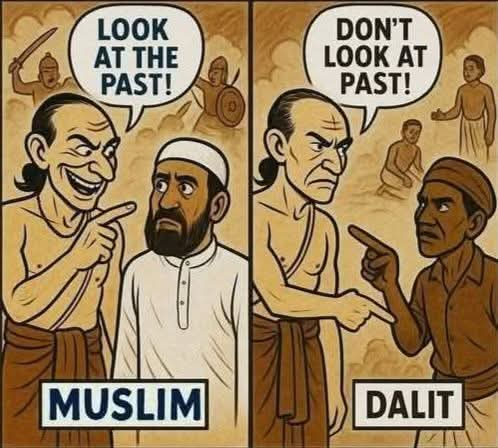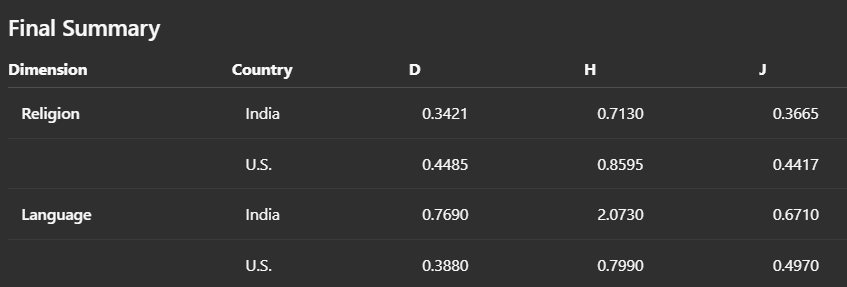From Bamiyan to Delhi: The BJP’s Hypocritical Embrace of the Taliban
How India’s Ruling Party Shifted from Condemning Buddha’s Destruction to Hosting Taliban Leaders — and Why Questioning It Makes You an Enemy
In March 2001, the world watched in horror as the Taliban regime in Afghanistan dynamited the ancient Bamiyan Buddhas — two towering statues carved into cliffsides in the 6th century, symbols of Afghanistan’s rich Buddhist heritage. The act was not just cultural vandalism; it was a deliberate erasure of history by religious extremists. India, under the BJP-led government of Atal Bihari Vajpayee, was among the loudest voices in condemnation. The Ministry of External Affairs issued statements urging the Taliban to protect the relics, and India co-sponsored a UN General Assembly resolution decrying the destruction.
Protests erupted across the country, with Sangh Parivar affiliates — often vocal defenders of Hindu heritage — taking to the streets to decry the Taliban’s barbarism. Fast forward to October 2025, and the same BJP government, now led by Narendra Modi, is hosting a high-level Taliban delegation in Delhi. Foreign Minister S. Jaishankar shakes hands with Taliban FM Amir Khan Muttaqi, and India announces the reopening of its embassy in Kabul.
What happened to the outrage? Apparently, it’s all “diplomacy” now.
This isn’t just a policy shift; it’s a glaring example of political hypocrisy, where principles bend to the winds of power. The same “sanghis” who once burned effigies of the Taliban are now defending the regime’s visit as strategic necessity. Question it, and you’re dismissed as ignorant of geopolitics — or worse, anti-national. But let’s unpack this turnaround, because it reveals a deeper rot: the demand for unconditional loyalty to the government, no matter how contradictory its actions.
The 2001 Outrage: When the Taliban Were the Ultimate Villains
Back in 2001, the Taliban’s edict to destroy “idols” like the Bamiyan Buddhas was met with global revulsion. Mullah Omar’s regime justified it as Islamic purity, but it was widely seen as an assault on shared human heritage.
In India, the BJP government didn’t mince words. On February 27, 2001, it condemned the decree and called for the protection of the statues.
Reports from the time describe widespread protests, including in Buddhist communities and among right-wing groups who framed it as an attack on ancient Indic civilization.
The Sangh Parivar, with its emphasis on cultural preservation, was particularly vocal. RSS affiliates organized demonstrations, drawing parallels to historical invasions that targeted temples. It was a moment of unity: the Taliban were the bad guys, pure and simple.Even years later, BJP leaders referenced the Bamiyan destruction as evidence of the Taliban’s fanaticism. In a 2021 speech, Uttar Pradesh Chief Minister Yogi Adityanath equated support for the Taliban with anti-humanity and anti-India acts, warning against sympathizers and even jailing people accused of celebrating the group’s takeover of Kabul.
The message was clear: The Taliban represented everything the BJP claimed to oppose — religious extremism, destruction of heritage, and threats to India’s security.
2025: From Protests to Protocol
Cut to October 2025. Taliban Foreign Minister Amir Khan Muttaqi arrives in India for a groundbreaking week-long visit — the first by a senior Taliban official since the 2021 takeover.
He’s greeted warmly, meets with Jaishankar and NSA Ajit Doval, and discusses trade, humanitarian aid, and regional stability.
India upgrades its Kabul mission to a full embassy, signaling deeper ties.
Muttaqi even visits Deoband in Uttar Pradesh, home to a prominent Islamic seminary, under heavy security provided by the state government.
The irony? This is the same Yogi Adityanath who, in 2021, accused Deoband clerics of backing the Taliban and arrested Muslims on flimsy charges of Taliban sympathy.
Now, his administration is rolling out the red carpet, complete with Z-plus security and transportation for the delegation.
Critics like PDP leader Mehbooba Mufti have called out the hypocrisy, noting how the BJP embraces the Taliban abroad while targeting Indian Muslims at home.
When questioned, the response is predictable: “It’s diplomacy.” “Geopolitics demands it.” India needs to counter China’s influence in Afghanistan, secure trade routes via Chabahar, and isolate Pakistan amid its tensions with the Taliban over the Durand Line.
Fair points, perhaps. But why the selective amnesia? The Taliban hasn’t changed — women’s rights are still curtailed, minorities persecuted, and terror groups like TTP find safe havens. Engaging them might be pragmatic, but pretending the 2001 outrage never happened? That’s gaslighting.
Yogi’s U-Turn: From Jailing Supporters to Guarding Leaders
Yogi Adityanath embodies this flip-flop. In September 2021, he declared, “Supporting Taliban means backing anti-India, anti-humanity acts.”
His government cracked down, arresting young Muslims for alleged pro-Taliban posts or celebrations.
Fast forward to 2025, and Yogi’s UP police are providing security to Muttaqi’s delegation during their Deoband visit.
Old videos of Yogi’s rants have gone viral, sparking debates on social media.
This isn’t isolated. It’s part of a pattern where past condemnations evaporate when convenient. The Taliban, once equated with terror, are now partners in “regional stability.” And if you point out the inconsistency? You’re told to trust the government’s wisdom.
The Bigger Picture: Trump, China, and the Cult of Unquestioning Loyalty
This Taliban tango isn’t unique. Look at Donald Trump. In 2020, BJP supporters built a temple for him in Telangana and organized havans across India praying for his election win.
Modi called him “my friend,” and crowds chanted “Namaste Trump” at rallies. But by 2025, with Trump back in power and slapping 50% tariffs on Indian imports, he’s the villain.
Relations have soured over trade, Kashmir mediation offers, and energy disputes. Overnight, the narrative flips — no questions asked.
Same with China. For years, Xi Jinping was the enemy — border clashes, economic boycotts, apps banned. Yet in August 2025, Modi meets Xi in Tianjin, shakes hands, and calls for partnership.
“India and China are partners, not rivals,” they declare.
Tomorrow, it could be Pakistan: “Oh, they’re friends now.” And the faithful are expected to nod along.
This is the essence of “andhbhakti” — blind devotion. You’re not supposed to think independently. If the government says Taliban bad, echo it. If it says good, pivot. Spread the WhatsApp forwards, defend the Godi media’s mental gymnastics, and shut down dissent. Questioning isn’t critique; it’s betrayal. The real message: Loyalty to the party trumps principles, history, or logic.
In a democracy, diplomacy should be debated, not deified. The Taliban visit might serve India’s interests, but erasing the Bamiyan memory to justify it insults our intelligence. If “geopolitics” excuses everything, what’s left of accountability? Perhaps it’s time to stop being sheep and start asking why the shepherds keep changing direction.

